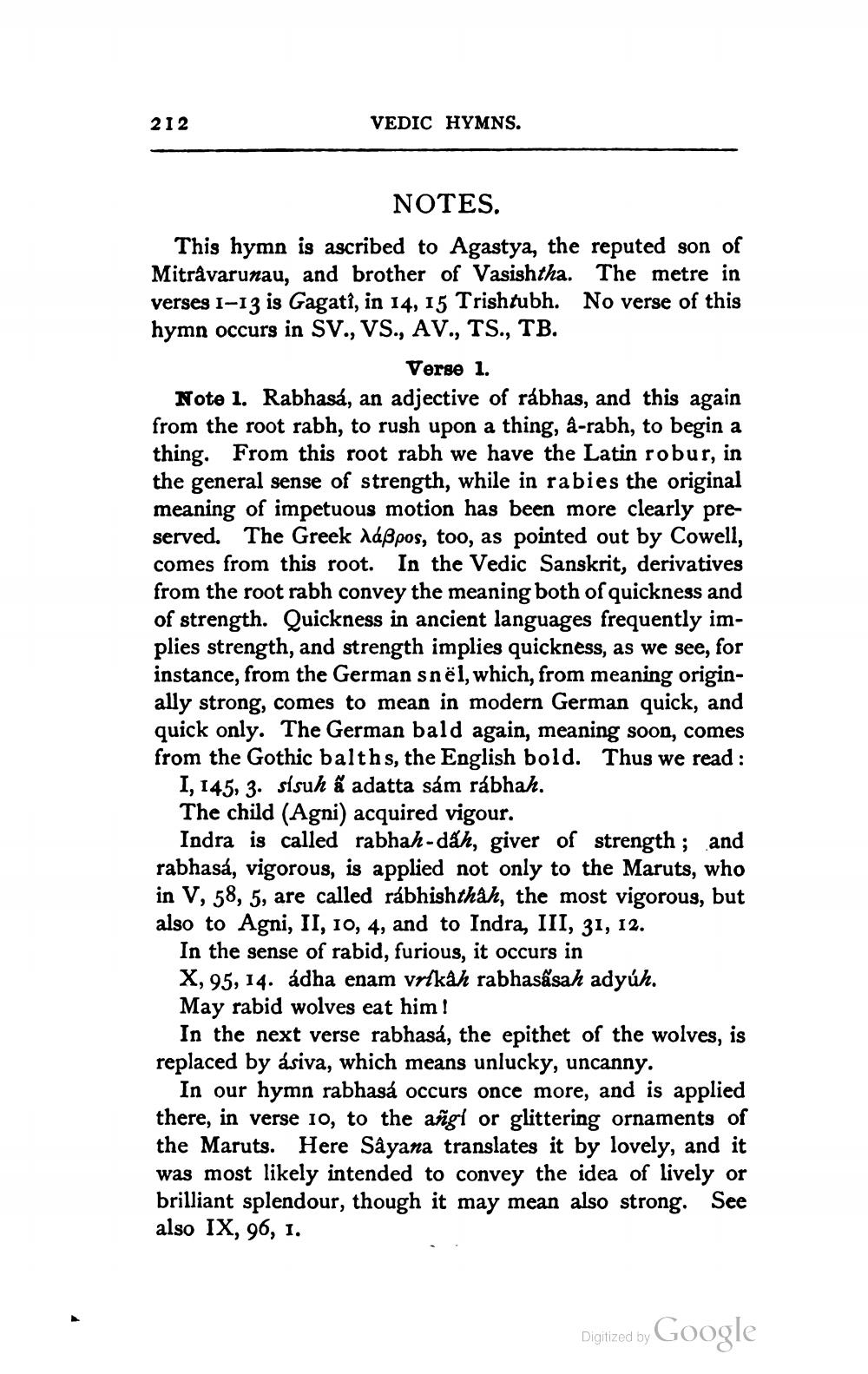________________
212
VEDIC HYMNS.
NOTES. This hymn is ascribed to Agastya, the reputed son of Miträvarunau, and brother of Vasishtha. The metre in verses 1-13 is Gagatî, in 14, 15 Trishtubh. No verse of this hymn occurs in SV., VS., AV., TS., TB.
Verse 1. Note 1. Rabhasá, an adjective of rabhas, and this again from the root rabh, to rush upon a thing, a-rabh, to begin a thing. From this root rabh we have the Latin robur, in the general sense of strength, while in rabies the original meaning of impetuous motion has been more clearly preserved. The Greek Aaßpos, too, as pointed out by Cowell, comes from this root. In the Vedic Sanskrit, derivatives from the root rabh convey the meaning both of quickness and of strength. Quickness in ancient languages frequently implies strength, and strength implies quickness, as we see, for instance, from the German snël, which, from meaning originally strong, comes to mean in modern German quick, and quick only. The German bald again, meaning soon, comes from the Gothic balths, the English bold. Thus we read:
I, 145, 3. sísuh ã adatta sám rábhah. The child (Agni) acquired vigour.
Indra is called rabhah-dah, giver of strength; and rabhasá, vigorous, is applied not only to the Maruts, who in V, 58, 5, are called rábhishthåh, the most vigorous, but also to Agni, II, 10, 4, and to Indra, III, 31, 12.
In the sense of rabid, furious, it occurs in X, 95, 14. ádha enam vrlkah rabhasásah adyúh. May rabid wolves eat him!
In the next verse rabhasá, the epithet of the wolves, is replaced by ásiva, which means unlucky, uncanny.
In our hymn rabhasá occurs once more, and is applied there, in verse 10, to the angi or glittering ornaments of the Maruts. Here Sâyana translates it by lovely, and it was most likely intended to convey the idea of lively or brilliant splendour, though it may mean also strong. See also IX, 96, 1.
Digitized by
Digized by Google




